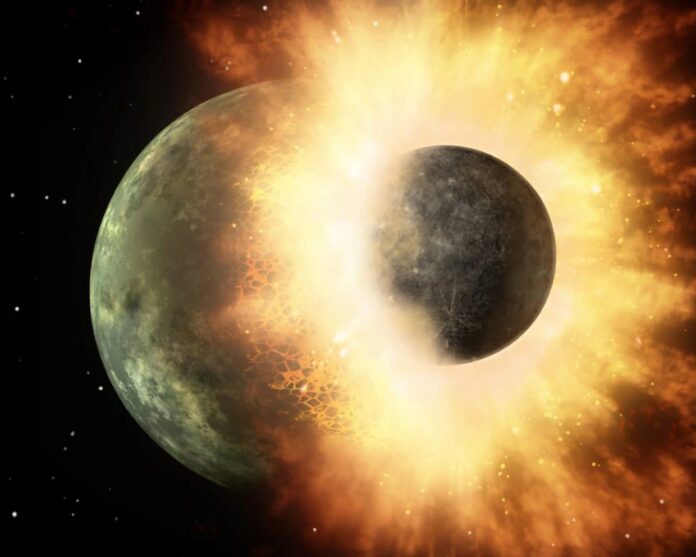Although planets surround stars in the galaxy, how they form remains debatable. Despite the wealth of worlds in our own solar system, scientists still aren’t certain how planets are built.
Earth began to form over 4.6 billion years ago, and past research suggests that the moon emerged a short span later. For as long as three decades, the overarching clarification for the moon’s origin was that the moon comes about because of the impact of two protoplanets, or embryonic universes.
There are three theories on how our planet’s satellite might have formed: the giant impact hypothesis, the co-formation theory, and the capture theory.
Among all, the ‘Giant Impact Hypothesis’ seemed to explain many details about the Earth and the Moon, for example, the large size of the moon compared with the Earth and the rotation rates of the two bodies.
However, astronomers challenged it in the past few years and proposed many options.
Computer models of the giant impact scenario often state that more than 60 percent of the moon may have been made of material from Theia. Moreover, rock samples from the moon also show that its composition is uncannily more similar to Earth.
But now, this puzzle seems to be solved, suggesting that the moon formed when a Mars-size rock struck Earth while it was still young and covered in molten rock.
To address this puzzle, Natsuki Hosono, a planetary scientist at the Japan Agency for Marine-Earth Science and Technology in Yokohama, and his team developed computer models simulating Earth covered with an ocean of magma, which most models of the planet’s formation suggest the planet had soon after its birth. They next analyzed what happened when a Mars-size rock, about a tenth of Earth’s mass, hit this molten protoplanet.
Scientists believe this study could help explain the compositional similarities between the moon and Earth while also explaining details such as their rotation rates.
Hosono told Space.com, “Prior work on lunar formation ignored the effect of the magma ocean. Our research concluded that the magma ocean is one of the most important things for the moon-forming giant impact.”
“Our model suggests the amount of debris from an impact of a molten Earth was comparable to the current mass of the moon. However, prior work suggested that to build the moon, the giant impact first needed to generate an amount of debris equal to about three to four times the moon’s mass.”
“Future research might consider larger masses for Theia and factor in the rotation of the proto-Earth to see if that might lead to enough debris to form a moon of the right size.”
Journal Reference:
- Hosono, N., Karato, Si., Makino, J. et al. Terrestrial magma ocean origin of the Moon. Nature Geoscience. 12, 418–423 (2019). DOI: 10.1038/s41561-019-0354-2
